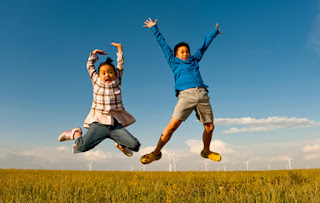Therapeutic approaches for coordination disorders(CD)
Sensory IntegrationandOccupational Therapy
approaches that can support the child
with Coordination Disorder and their carers include:
1.
Observing the
child during play and formal assessment to
determine the child’s abilities with gross motor (whole body) tasks and then
making recommendations for management.
2.
Devise goals: Setting
functional goals in collaboration with the child, parents and teachers so that
therapy has a common focus beneficial to everyone involved.
3.
Educating parents,
carers and teachers about coordination disorder, age appropriate skills a child should be
demonstrating and providing management strategies/ideas to assist the child in
the home, at school and in the community.
4.
Physical skills: Providing
ways/ideas to promote physical activity and participation in team/group
activities.
5.
Underlying skills: Developing
the underlying skills necessary to support whole body (gross motor) and hand
dexterity (fine motor) skills, such as providing activities to support:
1. Balance and coordination
2. Strength and endurance
3. Attention and alertness
4. Body awareness
5. Movement planning
6.
Direct skill teaching through
a task based approach.
7.
Confidence: Building
self-confidence to enable a child to willingly participate (it is common for
these children to shut down when they perceive the task to be too hard) in
activities by:
1. Providing the child with education about
why they may be experiencing difficulties with movement, their strengths as
well as their weaknesses and providing them with and teaching them strategies
to overcome obstacles they may face.
2. Breaking down specific physical skills into
one or two step components to teach the skill and then gradually adding in new
components until the skill is doable in its entirety (e.g. skipping – start
with a step, then a hop).
3.
Providing opportunities and strategies to
master the same skill in differing environments (e.g. home versus school
versus. therapy session).
4.
Presenting the activities at the ‘just
right challenge’ level to provide success and then gradually increasing the
demands of a mastered skill.
8. Educating parents
and carers on ways to simplify tasks to the smallest
possible components and use simple and concise language.
9. Non-verbal cues: Using
physical and visual models or instructions, wherever possible, not just verbal.
10.
Sensory processing: Improving
sensory processing to ensure appropriate attention and arousal to attempt the
tasks as well as ensuring the body is receiving and interpreting the correct messages
from the muscles in terms of their position and relationship to each other.
11.
Multi-sensory approach: Using
a multi-sensory approach to learning new skills.
12.
Modelling tasks visually and
using hands-on adjustment techniques to aid body awareness for the child.
By
S.Mariappan
Sensory Integeration Therapist
Life Healthcare Rehabilitation Clinic Pl
moses.lhc@gmail.com








